Barrhaven Native Plants: Pro Install Boosts Local Wildlife
Quick Takeaways:
- Native plants are adapted to Ottawa's climate, requiring less maintenance.
- They provide essential food and habitat for local wildlife like bees, butterflies, and birds.
- Professional installation ensures proper site prep, plant selection, and higher success rates.
- Adding water sources and shelter enhances the habitat value of your yard.
- Choosing natives supports local biodiversity and creates beautiful, resilient gardens.
Introduction: Greening Barrhaven, One Native Plant at a Time!
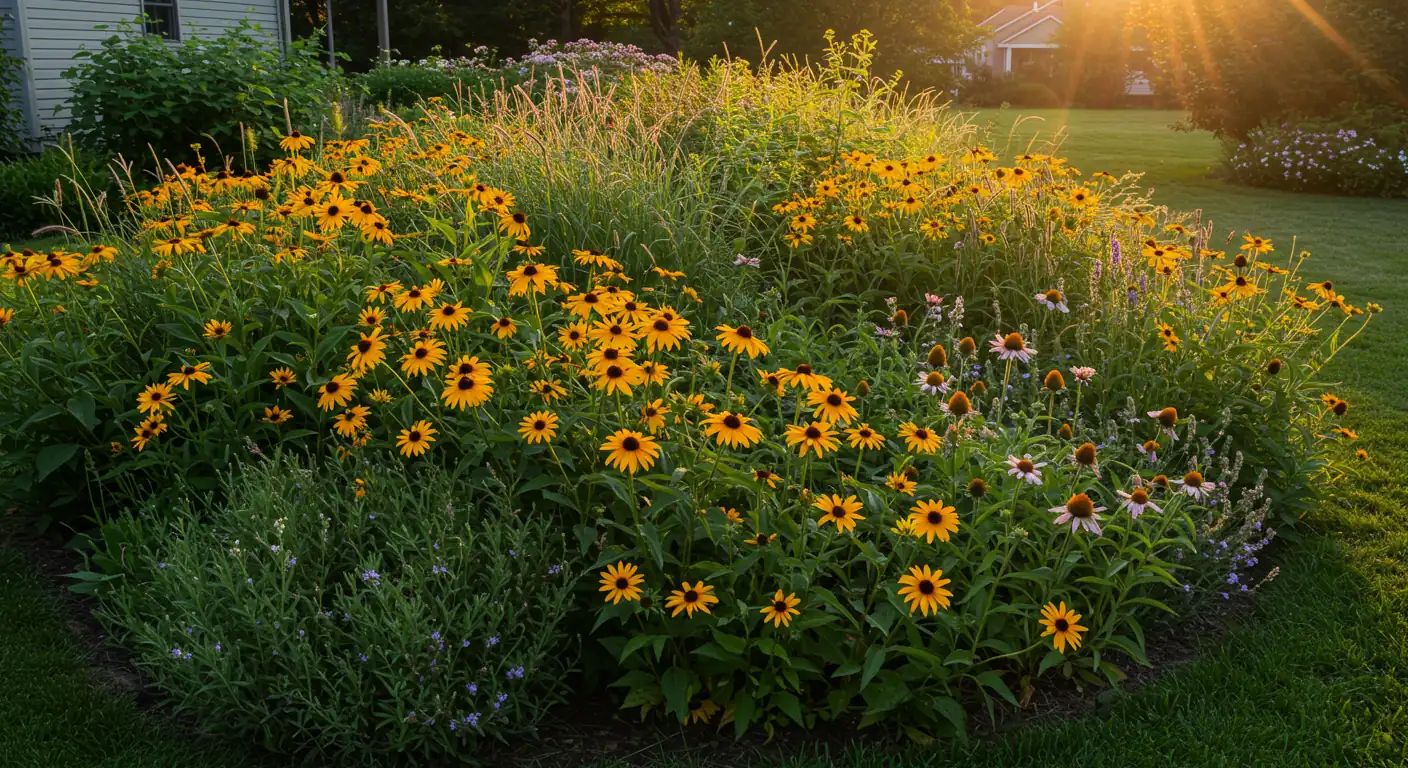
Hey Barrhaven neighbours! Ever gaze out at your yard and feel like it’s missing… well, a little something wild? Maybe a bit more buzz, flutter, or chirp? We hear you! Transforming your slice of Ottawa suburbia into a thriving natural haven is easier than you might think, and it all starts with native plants.
So, what’s the big deal about native plants? Simply put, these are the local rockstars of the plant world – the flowers, grasses, shrubs, and trees that have called the Ottawa region home for centuries. They’re perfectly adapted to our soil and climate, meaning less fuss for you once they’re settled in. More importantly, they’re the foundation of our local ecosystem. Think of them as the grocery store and housing development for Barrhaven’s essential wildlife – providing crucial food and habitat for hardworking bees, dazzling butterflies, and songbirds.
Choosing native species for your landscaping isn't just about pretty flowers (though they are gorgeous!); it's about creating a living garden that supports biodiversity right outside your door. Getting the right plant in the right place is key, and proper installation helps ensure they thrive for years to come, boosting your curb appeal and ecological impact. Ready to join the movement and make Barrhaven even greener, one beautiful native plant at a time? Let’s explore how! Explore more about [our services](https://cleanyards.ca/services/).
What's the Buzz About Native Plants in Ottawa?
Okay, let's talk about this "native plant" thing everyone in Ottawa seems to be chatting about! It's not just a fleeting gardening trend; it’s a smart way to create beautiful, resilient yards that actually help our local environment. So, what's the deal specifically for us here in the capital region?
Native plants are the superheroes that were thriving in areas like Barrhaven and Nepean long before any houses were built. Think Coneflowers, Milkweed, Serviceberry, or Blue Vervain. They’re basically Mother Nature’s original landscaping plan for Ottawa! They didn't just show up; they evolved over thousands of years to handle our wild weather swings – from sticky summer humidity to those bone-chilling winter freezes. They know our clay soil, they expect our rainfall patterns (mostly!), and they don't need constant pampering. They're like the tough Sens fans of the plant world – loyal and resilient!
The biggest buzz? It's for the birds and the bees... literally! Native plants provide the exact food and habitat our local wildlife needs to survive and thrive. That Milkweed? It's the only food source for Monarch butterfly caterpillars. Those berry bushes? A buffet for songbirds. Choosing natives creates a tiny nature preserve in your yard, boosting local biodiversity.
Now, for the practical perks for you, the homeowner. Because they're already adapted, native plants generally need less water once established (cha-ching! Lower water bills!). They typically don't require fancy fertilizers or pesticides, making your yard safer for kids and pets. This low-maintenance approach frees up your time for other things, like planning [cool fall fire pit gatherings](https://cleanyards.ca/blog/barrhaven-fire-pit-design-fall-tips-ottawa/)! Proper site preparation and plant installation are key to getting them started right, but the long-term payoff is huge. If you're tackling a big refresh, remember that a good [commercial spring cleanup approach for Barrhaven businesses](https://cleanyards.ca/blog/barrhaven-commercial-spring-cleanup/) often involves thinking about sustainable planting choices too – the same principles apply at home!
What about those other plants, the ones from away? While many non-natives are perfectly fine garden additions, some can become invasive bullies. Think of plants like Buckthorn or Garlic Mustard, sometimes seen causing trouble in natural areas around Nepean like the Stony Swamp trails. They can escape gardens, outcompete our local heroes, and disrupt the ecosystem. Choosing native helps keep these troublemakers in check. You can even integrate natives beautifully into more structured designs; imagine using native vines on structures discussed in [fall pergola ideas to boost value in Ottawa](https://cleanyards.ca/blog/barrhaven-fall-pergola-ideas-boost-value-ottawa/), or exploring [spring espalier techniques with native shrubs](https://cleanyards.ca/blog/barrhaven-spring-espalier-garden-art-techniques/). Adding natives boosts your curb appeal while doing good. Need a hand getting started or maintaining your native haven? Expert [landscaping and property maintenance services](https://cleanyards.ca/services/) are always an option.
Barrhaven's Backyard Buffet: Supporting Local Wildlife
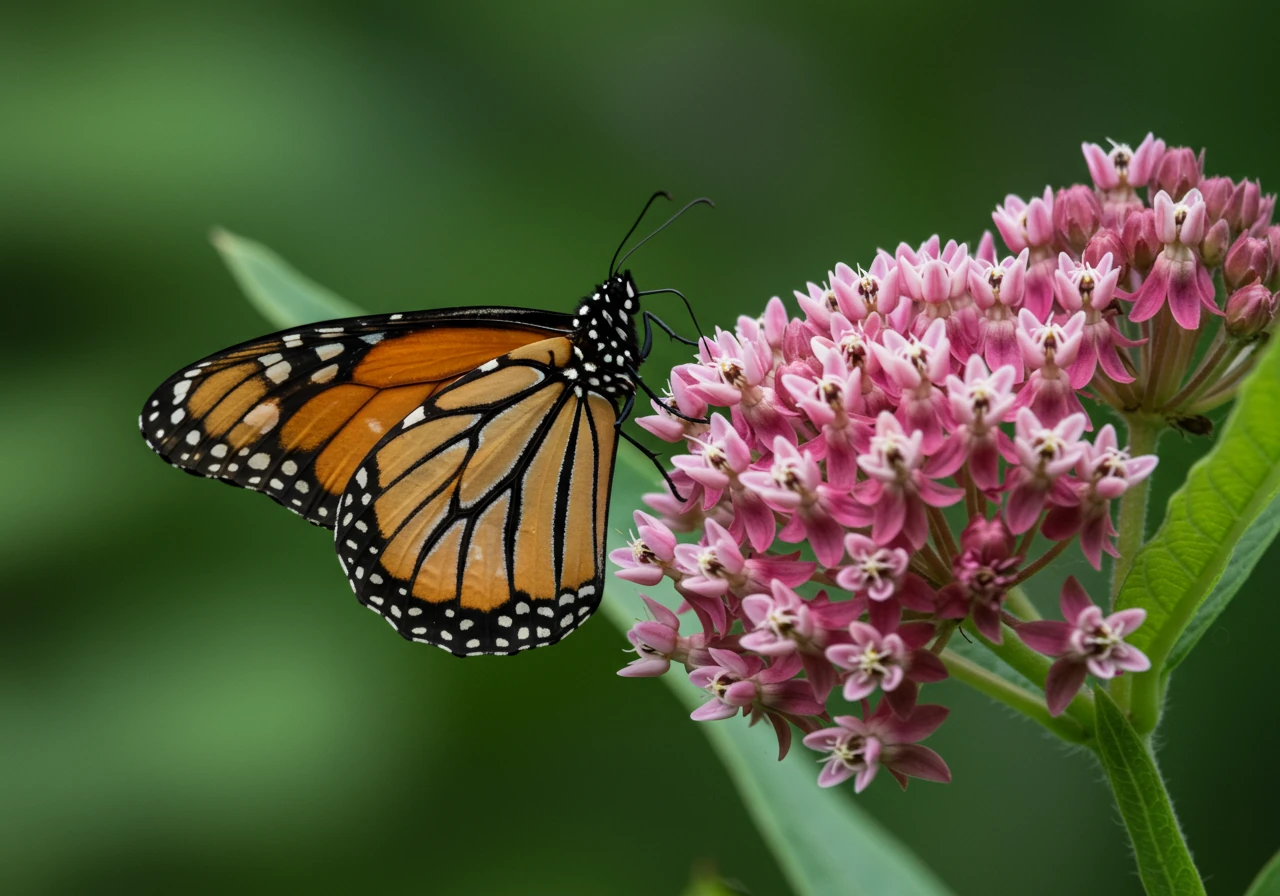
Alright, Barrhaven neighbours, let's turn your yard into the most popular restaurant in town – for wildlife, that is! Forget tiny napkins and fancy menus; we're talking about creating a vibrant ecosystem right outside your door using the magic of native plants. It’s like rolling out the welcome mat for the original Barrhaven residents: the birds, the bees, and the butterflies! This isn't just gardening; it's building a living community.
So, who might show up to your backyard bash? You'll be amazed! Planting native flowers like Coneflowers (Echinacea), Bee Balm (Monarda), and Asters provides essential nectar and pollen. These attract hardworking native bees (there are hundreds of species besides honeybees!) and dazzling butterflies like the Monarch, Painted Lady, and Swallowtail. Remember Milkweed (Asclepias)? It's the only food source for Monarch caterpillars – talk about a picky eater! Planting a variety ensures there's food available throughout the gardening season, keeping the buffet open from spring thaw to first frost.
But the party doesn't stop there! Native shrubs and trees like Serviceberry (Amelanchier), Dogwood (Cornus), Elderberry (Sambucus), and Oaks (Quercus) offer more than just pretty leaves for your landscaping. They provide nutritious berries and seeds for songbirds like chickadees, cardinals, jays, and goldfinches. Plus, they offer crucial shelter from predators and harsh weather, and safe nesting spots – creating essential wildlife habitat. These plants also host countless tasty insects that birds rely on for protein, especially when feeding their hungry young. Think of it as a full-service hotel and restaurant combo, boosting local biodiversity.
Why are native plants the VIPs for this buffet? Because they're made for Ottawa! They’ve spent centuries adapting to our dramatic climate swings – from sticky summer days near the Rideau River to those deep winter freezes we know so well. They understand the local soil, whether it's the heavy clay common in parts of Barrhaven and nearby Manotick or the sandier loam found closer to Greely. This means less fuss for you – less watering once established and typically no need for chemical fertilizers. They just get it here. Learn more about Ottawa's unique environment from the Rideau Valley Conservation Authority.
Ready to set the table? Here are a few tips:
- Start small! You don't need to overhaul your whole yard overnight. Convert just one corner of your lawn or add a few native perennials to an existing flower bed.
- Think layers: Use groundcovers (like Wild Ginger or Foamflower in shady spots), flowers of varying heights, shrubs, and maybe a small native tree to create different levels of habitat and visual interest.
- Leave the leaves (some of them!) in the fall. Many beneficial insects and butterfly larvae overwinter in leaf litter or hollow plant stems. This natural mulch also nourishes your soil. You might delay a full tidy-up until spring; getting your [Barrhaven yard cleanup service](https://cleanyards.ca/barrhaven-yard-cleanup-service/) can help prepare the space effectively when the time is right.
- Add water: A simple shallow dish or bird bath provides a vital water source for drinking and bathing, especially during dry spells. Keep it clean!
- Go easy on pesticides: Let nature's pest controllers (like ladybugs, lacewings, and birds attracted by your native plants) do their job. A healthy ecosystem often balances itself.
Feeling a bit overwhelmed by the planning or the physical installation? Don't sweat it! Transforming your space, whether it's preparing the garden beds or tackling larger [general property clean-up](https://cleanyards.ca/property-clean-up/) tasks to make room for your new plantings, can feel like a big project. Fortunately, there are excellent [professional yard care services](https://cleanyards.ca/services/) available right here in the Ottawa area that can help design, install, and maintain your wildlife haven. And hey, if you happen to be reading this from a bit further afield, know that help often extends beyond the city core; for instance, you can find assistance like a [Marionville property cleanup service](https://cleanyards.ca/marionville-property-cleanup-service/). When reaching out for professional help, your personal information should always be handled respectfully; reputable companies will explain how they protect your data in something like [our privacy policy](https://cleanyards.ca/privacy-policy/).
By incorporating native plants, you’re not just enhancing your home's curb appeal; you’re creating a living landscape, a buzzing, fluttering, chirping buffet that supports the beautiful, essential wildlife that calls Barrhaven and the wider Ottawa region home. Happy planting! Check out our reviews on Google My Business!
Our Top Native Plant Picks for Ottawa South Gardens
Okay neighbours, let's get down to the fun part – picking some plants! You want your Ottawa South garden (whether you're in Barrhaven, Richmond, Osgoode, or anywhere in between!) to look fantastic and be a haven for local critters. Choosing native plants is the secret sauce. These local heroes are tough, beautiful, and already know how to handle our climate.
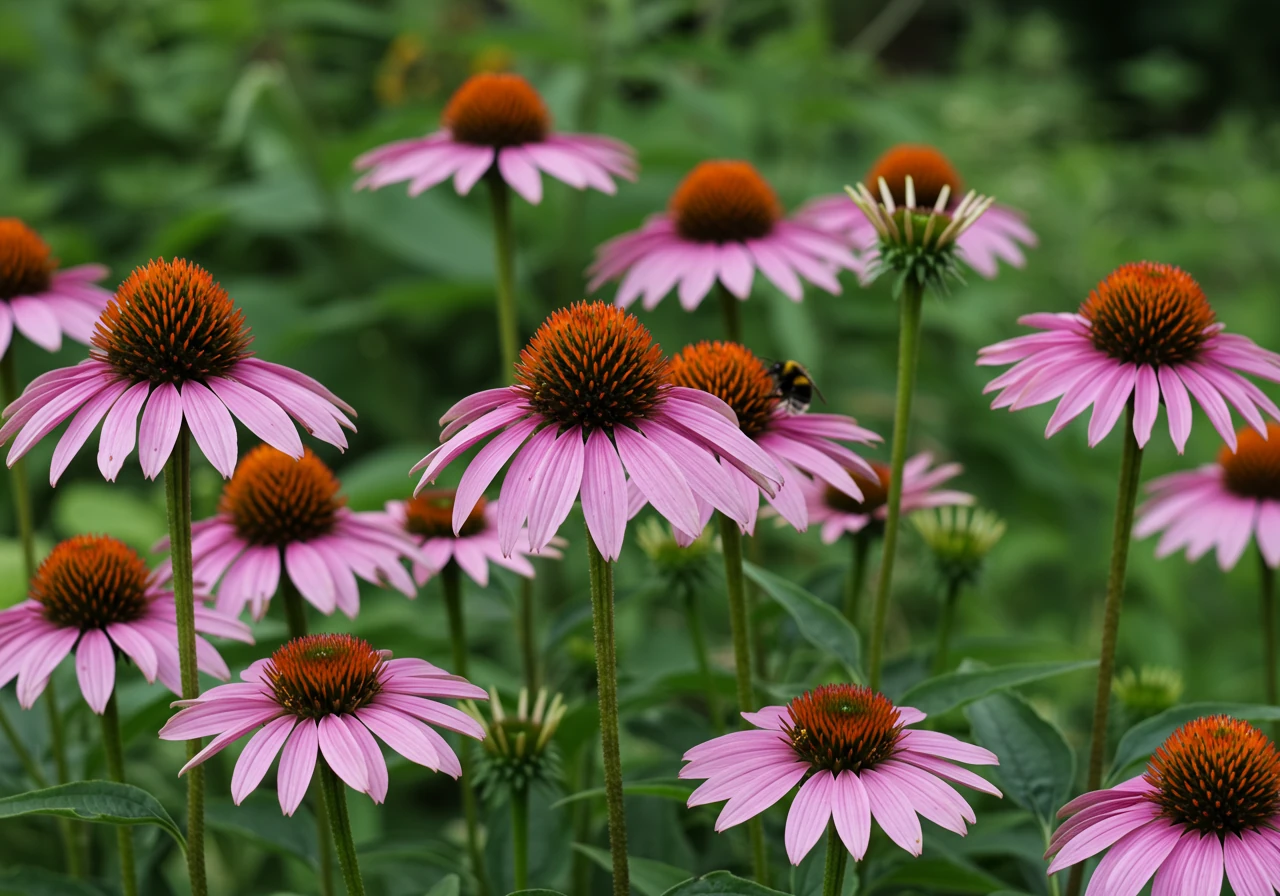
Getting your garden beds ready might involve some elbow grease. We know folks from Barrhaven to Manotick appreciate a tidy start, and sometimes a bigger cleanup is needed – professional help is available across the region, even reaching areas like those served by a dedicated [Metcalf property cleanup service](https://cleanyards.ca/metcalf-property-cleanup-service/). Once your space is prepped, consider these native powerhouses. They can lead to some truly stunning [Ottawa garden transformations](https://cleanyards.ca/transformations/)!
Here are a few of our favourite native plant picks that generally do well in our region's conditions:
Purple Coneflower (Echinacea purpurea)
The classic! These sturdy plants boast beautiful, long-lasting purple-pink flowers with a distinctive cone centre.
- Needs: Full sun to light shade, average, well-drained soil. Pretty drought-tolerant once it settles in.
- Wildlife Perk: Bees and butterflies flock to the nectar. Leave the seed heads standing in fall – goldfinches love munching on them! A real gardening win-win.
Black-Eyed Susan (Rudbeckia hirta)
Sunshine in a flower! These cheerful yellow blooms with dark centres are super reliable and bring a splash of brightness to any landscaping design.
- Needs: Full sun is best. Tolerates a range of soils but prefers good drainage.
- Wildlife Perk: Pollinators adore them, and birds enjoy the seeds later in the season.
Serviceberry (Amelanchier spp.)
A fantastic small tree or large shrub offering year-round interest. Delicate white flowers in spring, tasty berries in summer (if the birds don't beat you!), and lovely fall colour.
- Needs: Full sun to part shade. Adaptable to different soil types.
- Wildlife Perk: Early pollen/nectar source, berries are a bird magnet, provides habitat and cover.
Cardinal Flower (Lobelia cardinalis)
Need a showstopper for a moist spot? Look no further! Its stunning spikes of brilliant red flowers are absolutely electric.
- Needs: Part shade to full sun, consistently moist soil. Great near a downspout or in a rain garden.
- Wildlife Perk: Hummingbirds find these flowers irresistible!
Wild Columbine (Aquilegia canadensis)
Such a charming woodland edge plant! Features unique, nodding red and yellow flowers that look like little lanterns.
- Needs: Part shade to full shade, average to moist, well-drained soil. Doesn't like to be waterlogged.
- Wildlife Perk: Perfect shape for hummingbirds and long-tongued bees. Adds delicate beauty.
Switchgrass (Panicum virgatum)
An excellent native ornamental grass. Forms upright clumps and develops airy seed heads in late summer, turning golden bronze in the fall. Adds texture and movement.
- Needs: Full sun. Very adaptable to different soils, including clay, and quite drought-tolerant.
- Wildlife Perk: Provides essential cover for birds and small mammals. Seeds offer winter food. Great for winter interest in your landscaping.
New England Aster (Symphyotrichum novae-angliae)
A fall superstar! Bursts into bloom late in the season with masses of vibrant purple flowers, providing crucial late-season food.
- Needs: Full sun, average to moist soil. Can get tall – pinch back mid-summer for bushier growth if desired.
- Wildlife Perk: Critical late-season nectar source for migrating Monarchs and other pollinators preparing for winter. Useful for services like [Ottawa garden clean up](https://cleanyards.ca/ottawa-garden-clean-up-service/).
A Few Quick Tips:
- Right Plant, Right Place: Match the plant's sun and moisture needs to your specific garden spot. Choosing the right plants is just as important as smart [landscape material selection](https://cleanyards.ca/material-selection/) for pathways or patios.
- Group 'Em: Planting in groups of 3, 5, or more makes a bigger visual impact and helps pollinators find them easily. Consider [garden install services](https://cleanyards.ca/garden-install/) for larger groupings.
- Water Wisely: Water new installations regularly until established (usually the first season). After that, most natives are pretty low-maintenance.
While low-fuss, they still benefit from occasional [basic garden maintenance](https://cleanyards.ca/garden-maintenance/) like spring cleanup or dividing mature clumps to look their best and stay healthy.
<!--| Plant Name | Sun Needs | Height | Bloom Time | Wildlife Benefit |
|---|---|---|---|---|
| Purple Coneflower | Full Sun/Pt Shade | 2-4 ft | Summer | Bees, Butterflies, Birds (seeds) |
| Black-Eyed Susan | Full Sun | 1-3 ft | Summer/Fall | Pollinators, Birds (seeds) |
| Serviceberry | Full Sun/Pt Shade | 15-25 ft | Spring (flowers), Summer (berries) | Birds, Pollinators |
We could even put together a handy comparison table summarizing sun needs, height, bloom time, and wildlife benefits for these Ottawa South favourites! Want more personalized advice for your specific yard? Get in touch – you can learn more about [the Clean Yards team and our approach](https://cleanyards.ca/about-us/). Happy planting!
Why 'Pro Install' Makes a Difference: Beyond Just Digging Holes
Okay, let's dig into why getting your native plants professionally installed is often the smarter choice – it’s about much more than just making holes in the ground! Sure, the DIY spirit is strong in many Ottawa homeowners, from Barrhaven to Winchester, and it’s tempting to grab a shovel and just wing it. But when it comes to establishing a thriving native plant garden that supports local biodiversity, a little expertise goes a long, long way. Think of it as investing in success from the roots up!
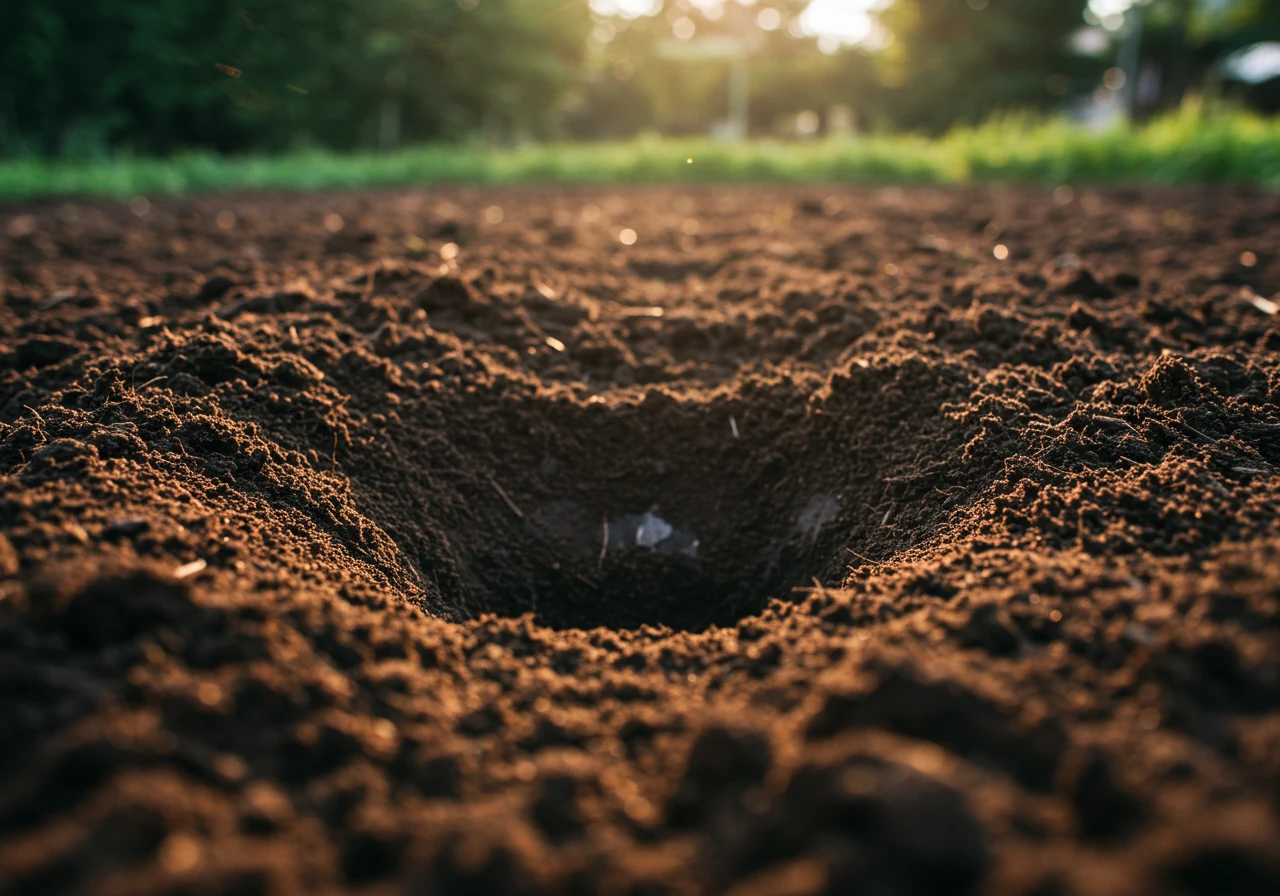
So, what magic do the pros bring? It starts before any soil is turned:
The Assessment Snoop
We investigate your site: sun exposure, soil type (hello Ottawa clay!), drainage, and existing plants. We match native species to the *right* spot like plant matchmakers.
Prep Work Perfection
Proper installation starts here. We clear the space (sometimes needing a full [Ottawa city yard cleanup service](https://cleanyards.ca/city-yard-cleanup-service/)), remove weeds thoroughly, amend the soil correctly with quality compost using proper [soil preparation](https://cleanyards.ca/soil-preparation/) methods, and plan for mature plant sizes. This might involve aspects similar to a [city garden clean-up service](https://cleanyards.ca/city-garden-clean-up-service/).
Planting with Precision
We handle root balls gently, dig holes to the correct depth/width, backfill carefully, and water appropriately to minimize shock and establish a welcoming habitat. It's different from basic [lawn care](https://cleanyards.ca/lawn-care/).
Avoiding DIY Pitfalls
We help avoid common mistakes like wrong plant choice, planting too deep, poor weeding, incorrect spacing, and improper watering, saving you time and money (and dead plants!). Consider professional help even for broader tasks like [city property cleanup service](https://cleanyards.ca/city-property-cleanup-service/).
Common DIY pitfalls we help you avoid include choosing plants doomed for your conditions, planting too deep (a surprising plant killer!), inadequate weed removal leading to competition, poor spacing, and improper initial watering. These mistakes cost you time, money (replacing dead plants!), and can delay the ecological benefits you’re hoping for.
Choosing professional installation means leveraging experience for a higher success rate. Your native plants establish faster, look better sooner, and start supporting local wildlife more quickly. It saves you the backache and the guesswork! You can learn more about [the experienced team behind Clean Yards](https://cleanyards.ca/about-us/) and our commitment to quality landscaping and gardening practices across Ottawa and surrounding areas like Winchester and [Metcalfe](https://cleanyards.ca/metcalf-yard-cleanup-service/). Ready to ditch the guesswork and ensure your native plant installation thrives? [Reach out to Clean Yards today](https://cleanyards.ca/contact-us/) to discuss your project!
Creating a Complete Habitat: Water, Shelter, and Sustainable Practices
Okay, you've picked out some amazing native plants, maybe even had them expertly installed. High five! But wait, there's more! To truly roll out the welcome mat for wildlife in Ottawa, think beyond just the plants. Creating a complete habitat involves offering the essentials: water, shelter, and managing your space sustainably. It's like adding a comfy couch and a well-stocked fridge to the beautiful house you just built!
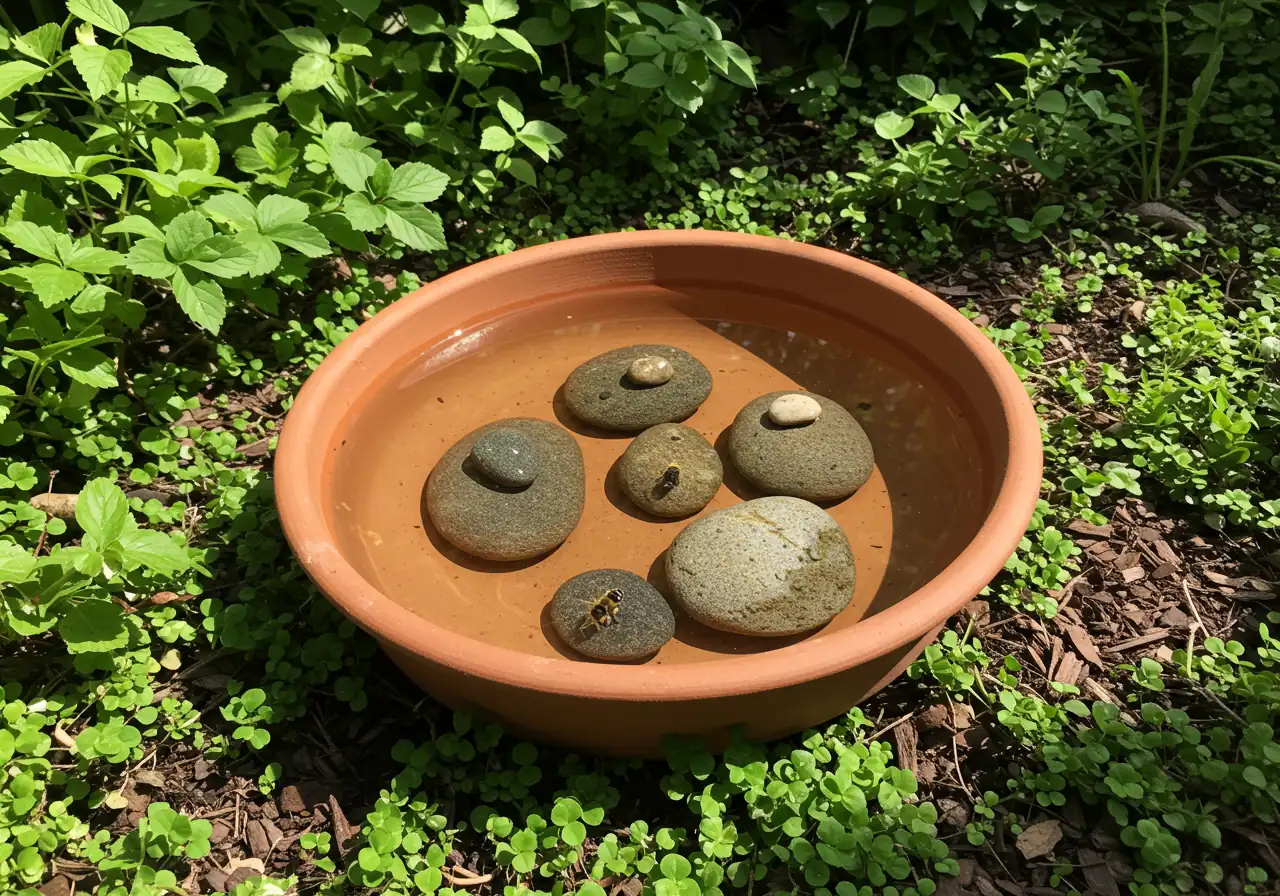
Water: The Backyard Oasis
Water is life! Even a simple, shallow dish of water can be a lifesaver for birds, bees, butterflies, and tiny critters, especially during those hot, dry Ottawa summers.
- Tip: Use a shallow bird bath or even just an overturned garbage can lid or large plant saucer. Place a few stones inside so insects have a safe place to land and drink without drowning.
- Keep it Clean: Dump and refill the water every day or two to prevent mosquito larvae (nobody invited them!) and keep it fresh for your visitors.
Shelter: Safe Havens and Hideouts
Wildlife needs places to hide from predators, take cover from bad weather, and raise their young.
- Rock On: A small pile of rocks in a sunny spot creates crevices for beneficial insects and little amphibians.
- Brush it Off: Got branches from pruning? Instead of bundling everything for pickup, consider creating a small brush pile in a back corner. It's five-star accommodation for birds and small mammals. Find tips on managing yard waste from the City of Ottawa.
- Leave the Stems & Leaves: Resist the urge for hyper-tidiness! Many native bees and beneficial insects overwinter in hollow plant stems or beneath leaf litter. While a full [Ottawa property cleanup service](https://cleanyards.ca/ottawa-property-cleanup-service/) might clear everything away, leaving some natural debris in your designated wildlife zones until spring provides crucial winter shelter. You can still keep other areas neat; defining the wilder zones from formal beds using crisp [mulching and edging techniques](https://cleanyards.ca/mulching-and-edging/) creates a nice visual balance in your landscaping.
Sustainable Superpowers: Working with Nature
Creating a habitat goes hand-in-hand with eco-friendly gardening practices.
- Nix the Nasty Stuff: Reduce or eliminate pesticides. Native plants attract beneficial insects that often prey on pests, creating a natural balance. Healthy biodiversity is your best defence!
- Compost Power: Turn kitchen scraps and yard trimmings into black gold! Composting enriches your soil naturally, reducing the need for chemical fertilizers and improving water retention.
- Water Wisely: Native plants need less water once established, but consider a rain barrel to capture runoff for thirstier plants or your water feature.
Tune In: A Seasonal Wildlife Calendar
Want to see the fruits (or flutters!) of your labour? Create a simple calendar! Note when certain flowers bloom, when you first spot hummingbirds or Monarchs, or when birds start nesting. It connects you to the rhythm of your garden and helps you appreciate the habitat you've built, whether you're in Barrhaven, Russell, or Embrun. Seeing these connections across neighbourhoods helps build ecological corridors for wildlife.
Adding features like ponds or substantial rockeries might feel like a big installation. If you seek professional help, clear communication is key. Providing [honest estimate feedback](https://cleanyards.ca/estimate-feedback/) helps ensure the plan meets your goals, and knowing you're satisfied with the work is the best [thank you](https://cleanyards.ca/thank-you/) for any service team. And remember, before any project starts, it’s good practice to understand the details – reviewing the [service terms and conditions](https://cleanyards.ca/terms-and-conditions/) ensures everyone is on the same page.
By adding water, shelter, and adopting sustainable practices, you transform your yard from just plants into a living, breathing ecosystem!
Quick Wins for Wildlife!
Want to turn your Barrhaven backyard into a wildlife hotspot without needing a PhD in gardening? Easy peasy! Helping our local critters doesn't require a massive landscaping makeover. Here are a few simple wins you can implement right away:
- Start Small, Think Big Impact: You don't need to rip everything out! Pick a sunny corner and add just a few native powerhouses like Coneflowers or Milkweed. Even swapping out a small square of grass—way less work than arranging a full [new lawn sod installation](https://cleanyards.ca/sod-installation/)!—for native flowers makes a huge difference for pollinators buzzing around Ottawa. Focus on easy wins first; you can always tackle more extensive bed preparation, the kind handled by a [dedicated Marionville garden clean up service](https://cleanyards.ca/marionville-garden-clean-up-service/), when you're ready for bigger projects.
- Just Add Water (Seriously!): A shallow dish of water with a few stones in it (for safe landing spots) is like a five-star resort for thirsty bees, butterflies, and birds, especially during Ottawa's dry spells. Think of it as the local watering hole! Just remember to refresh it every day or two – nobody likes stale water, not even the busiest bees!
- Embrace the Slightly Messy Look: Okay, maybe not messy, but less sterile. Leave some fallen leaves in your garden beds over winter and don't cut back all your dead plant stems until spring. Many beneficial insects and butterfly larvae need this cover to survive the cold. While you might still schedule a thorough [Metcalfe yard cleanup service](https://cleanyards.ca/metcalf-yard-cleanup-service/) for the main parts of your lawn and pathways, dedicating a small garden bed or corner to natural debris is ecological gold. If managing the 'wild' bits alongside regular maintenance feels like too much, remember pros offering a [complete Marionville yard cleanup service](https://cleanyards.ca/marionville-yard-cleanup-service/) can handle the tidy zones, freeing you up for habitat enhancement.
- Layer Up for Lodging & Lunch: Think beyond just flowers at ground level! Add native shrubs (like Serviceberry) for berries and shelter, or low-growing native groundcovers under taller plants. Creating layers provides more diverse habitat options for different creatures. Keep these designated nature zones looking intentional by clearly defining their borders. Using [crisp mulching and edging](https://cleanyards.ca/mulching-and-edging/) around your native plantings creates a neat frame for your bustling mini-ecosystem, showing your landscaping is both beautiful and beneficial.
Every little bit helps create a friendlier Ottawa, from Nepean to Osgoode, for our essential wildlife neighbours! Go on, give one a try! Maybe even get inspired by the Fletcher Wildlife Garden for ideas.
Native Plant Benefits (Illustrative)
Barrhaven Native Plant FAQs: Your Questions Answered!
Okay, Barrhaven neighbours, you've got questions about going native, and we've got answers! Diving into native plant gardening is exciting, but it's natural to wonder about the practical stuff. Let's tackle some common queries to help you grow with confidence!
Sometimes the initial price tag can seem a bit higher for native perennials or shrubs compared to common annuals. But think long-term! Natives are adapted to Ottawa's climate, often needing less water, fertilizer, and fuss once established. They usually live longer too, so you're not replacing them yearly. It's an investment in a resilient, beautiful garden and local biodiversity.
Mostly true! Once established (give them a season or two!), native plants are superstars at handling Barrhaven's weather swings. They typically need less watering and no fussy fertilizers. Some tidying like cutting back stems in spring might be needed. For regular upkeep, options like a [professional city garden maintenance service](https://cleanyards.ca/city-garden-maintenance-service/) can handle tasks, but natives generally reduce your gardening workload compared to needier exotic plants.
You bet! Many Ottawa-area native plants evolved in clay soil. Species like Switchgrass, Coneflower, or Joe Pye Weed can handle it. The trick is choosing the right natives for clay and ensuring good drainage. Proper [initial soil preparation techniques](https://cleanyards.ca/soil-preparation/) like adding quality compost can make a huge difference in helping roots get established, even in challenging soil. Assistance like a [Metcalf garden clean up service](https://cleanyards.ca/metcalf-garden-clean-up-service/) can also help prepare difficult areas.
It's a common worry! While native plants do attract wildlife (that's the point!), they mostly attract beneficial insects, pollinators, and birds. A healthy garden with biodiversity often keeps pests in check naturally. You might see some nibbles – that means your habitat is working! Serious pest infestations are less common than with stressed, non-native plants.
Patience, grasshopper! Native perennials often follow the "sleep, creep, leap" pattern. The first year, they focus on root growth ('sleep'). The second year, they 'creep' with more foliage. By the third year, they often 'leap' and really fill out! Proper installation and good site prep are crucial for quicker establishment. Sometimes, clearing the area well beforehand, similar to the thoroughness of an [Ottawa yard cleanup service](https://cleanyards.ca/ottawa-yard-cleanup-service/), gives them the best head start. This dedicated prep pays off everywhere, from urban lots needing a [city yard cleanup service](https://cleanyards.ca/city-yard-cleanup-service/) to properties needing attention like those covered by a [specialized Marionville yard cleanup service](https://cleanyards.ca/marionville-yard-cleanup-service/).
Conclusion: Grow Wild in Barrhaven - Let's Get Planting!
So there you have it, Barrhaven! Getting a little wild in your yard with native plants isn't just a trend; it's a fantastic way to create stunning, low-fuss landscaping that actually gives back. We've talked about how these local heroes are perfectly suited for our Ottawa climate, requiring less water and care once settled. More importantly, they're the key to building a buzzing, fluttering backyard habitat, supporting the birds and bees that make our neighbourhoods, from here to Nepean, feel alive.
Remember, you don't need to turn your entire property into a wilderness overnight! Starting small with just a few native flowers or a shrub makes a real difference. And if the thought of digging, prepping soil, and choosing the perfect spot feels a bit daunting, don't sweat it. Professional installation ensures your new green friends get the best possible start, saving you guesswork and helping your native gardening dreams thrive faster.
Ready to roll up your sleeves? Pick one native plant from our list, add that simple water dish for wildlife, or give us a call to chat about designing and installing your dream native garden. Let's transform Barrhaven, one beautiful, buzzing backyard at a time. Happy planting!

